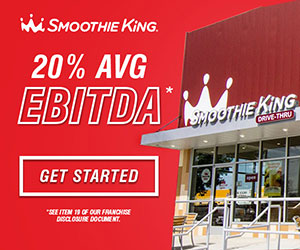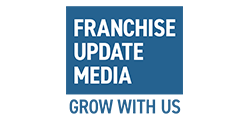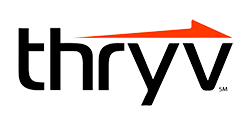Inbound Marketing: Optimizing Your Site for Maximum Lead Flow
The rapid increase in social media channels has provided new opportunities to build relationships with promising franchisee prospects, but it also has brought new levels of confusion, uncertainty, and a feeling of overload. In a webinar titled "Optimizing Your Site for Maximum Lead Flow," Mike Volpe, vice president of marketing at HubSpot, and Tim Ash, president and CEO of SiteTuners.com, shed some light on the subject and suggest simple, effective actions to increase lead flow.
The webinar was split into two parts, followed by questions. First, Volpe talks about how to optimize your website to get more people to find it. Then, Ash shares his expertise about landing pages and calls to action on how to increase conversions. Below are edited excerpts from he 60-minute webinar, an archived version of which is available online.
I. Mike Volpe
Volpe heads HubSpot's lead generation and branding strategy through inbound marketing, including blogging, search engine optimization, video marketing, and social media.
Let's talk about inbound marketing. It's a combination of search engine marketing, content marketing, social media marketing, conversion, lead nurturing, supporting your sales team, things like that all in one place.
The tips I'm going to talk about are based on our experience working with our 4,000 customers, and also all the data we have from over 3 million websites that have been graded in Website Grader. If you haven't used Website Grader yet, you should definitely put your website in there. It gives you a free report.
1) Identifying buyer personas
Your buyer persona is what should drive the content that you're creating. What you want to do is think about who your buyer persona is. In all the content we create here at HubSpot, we're constantly thinking about our two most important personas and asking ourselves, "Would this persona like this content?" We call them by name. We say things like, "Well, would Mary really like this webinar? Is that the thing Mary would be interested in? Why would Mary share that with her friends?"
To me, having that understanding of who that person is will help you decide what content you should be producing, what content those people are more likely to share in social media, what content they're more likely to subscribe to, and what things they're probably searching.
The perfect is the enemy of the good. Don't over-engineer this too much. What's important is not necessarily that you get the persona 100 percent right, but if you can get it kind of 90 percent right. It's more important to have something that you can work with and call by name to have those internal conversations about what would your persona like. From there, you can evolve and make your personas more focused and viable, more specific and better over time.
2) Publish, don't advertise
My second tip is to publish, don't advertise. For most display ads on the web, you're getting a 0.2 percent or even lower than that click-through rate. Most people ignore advertisements, right? To me that says I don't want to be the advertiser as much as I want to be the content. So, what I want to think about is how do I build up that presence? What do I do?
We've looked at over 1,500 small and medium-sized business. Companies that had a blog, on average, had 55 percent more website traffic. Certainly, there are probably some other things that go along with that, because companies that have a blog are maybe a little bit more sophisticated, etc., but if you want to act like those companies that are getting more traffic, one of the key things you can do is start to blog. It gives you more pages.
3) Blogging Tips
- Title keywords. The title should be keyword-rich. You want to use good keywords - keywords that your personas would be searching for - in your titles.
- Images. Most of the things I've seen show that having an image in every article is good. It makes it more visually appealing. It gives people something to gravitate toward rather than just a whole bunch of text on the page.
- Call to action. The other thing that's really important is leveraging calls to action to drive more traffic to your landing pages. It's important to have a call to action in every article, and that's basically a link to something where people can register, opt in, start a trial, buy a product, something like that to get them moving down the sales and marketing process.
How to make search engines happy
It's important to make all search engines happy. Search engines traditionally have looked at two fundamental things when they decide who to show in the search results on that first page when your persona goes to make a search. They look at the context and the authority. The context is what's happening on each page of your website, and the authority is how important your website is on the Internet.
You need to be careful about the keyword selection and think about your personas - not what you want to be known as, but what your personas would call you.
II. Tim Ash
Ash is the author of Landing Page Optimization: The Definitive Guide To Testing and Tuning for Conversions and has spoken at numerous Internet conferences and events.
Designing your calls to action
I'm going to start with calls to action. Here is a landing page
The value proposition: filling out forms in the attention economy
I'd like to talk about another idea here. And this, I'll freely admit, I basically stole from Seth Godin and his excellent book, Permission Marketing. Once you have the visitor's attention, you'd better have a very compelling value proposition. All of us are in a kind of highly activated state: surfing around the web, clicking on things, the TV's on, the dog's biting our leg, it's all happening at once, and we're not in a deep contemplative mood. So you have to very quickly establish the value proposition.
It basically goes like this: what I need and what I value has to significantly outweigh any perceived hassle or cost to me. When I say "cost," I don't mean necessarily financial cost, because it's not. What I'm really talking about is friction, annoyance... My attention has a cost.
We live in an attention economy and if you're not really laser focused on that, you're going to lose. A cost to me is wasting 30 seconds of my time, and a high cost to me is wasting 5 minutes of my time, so I'm going to cut my losses in this world of infinite information. If you don't have exactly what I want, and if the value of that doesn't outweigh the hassle and cost, I'm moving on.
One of the things that we do as greedy marketers is to ask for too much information. That creates a lot of hassle, a lot of cost for me, without creating any value.
So what is the minimum information you need to have on this page to let someone download a white paper? Now, a lot of you are probably thinking, "That's obvious. Just an e-mail address." To which I'd say you're still a greedy marketer and you're not thinking this through. It's a download. You don't need any information to let me download it. You just need to let me press the button that says "Download it now."
Shortened form boosts response
Ash showed a long and a short online response form, studied the response rate, and had this to say about the shorter version:
This page performed 51 percent better for both the forms filled and propensity to pick up the phone and call the 800 number. The takeaway is "Make things simple." Don't ask for information you don't need. Have a very strong filter for adding fields to your forms. It should go like this: "Is this information absolutely necessary to complete the current transaction? Absolutely necessary?" If it's not, take it off. "Do I need it now, or is it a nice-to-have that I can gather later when I deepen my relationship with the prospect or the client?"
Optimizing landing pages
Do you like sitting in front of your computer monitor and reading novels? There's iPad. There's Kindle. There are all kinds of things better than sitting in front of your computer at 72 dots per inch and reading off of your monitor. Well, you're not alone. Nobody likes to read on the web because the web is not designed for reading novels. So don't write novels on your landing pages and on your website. If you cut down on the amount of text and increase readability and recall, you also increase conversion, so don't tell me the whole story. Otherwise, you're not going to get my money.
Trust factors
Trust really matters. Trust can be piled onto your page in a variety of ways: you can add reviews, the number of clients, the years you've been in business. Why is it so compelling when you walk into the hardware store and it says "Since 1979?" Well, that means you can trust them, and the same goes for online businesses. Even a few years of being up on the Internet is a real badge of honor and means you're a survivor and are steady and solid.
This is not rocket surgery, but it does require you to take off the rose-colored glasses, see your baby as ugly. Your landing page is your baby. It's your ugly baby. Look for the problems, and then go and fix them. There are things you should be able to spot at a moment's notice on your page and then just go in and change. It might be as simple as a headline change or using a different graphic or toning down your covers a bit, and you're going to see a lot of improvement.
Free assessment
HubSpot offers a free Inbound Marketing Assessment of your overall website. How optimized is it to attract lots of people? Is it set up right for the search engines? Is it set up right to do the right things in terms of social media and the overall optimization of your site?
Some Popular Questions from Webinar Participants
(for answers, see the webinar)
- Can you address prequalifying versus asking too much information on forms?
- Why does HubSpot have long forms if they are not good for conversions?
- What is a reasonable visitor-to-read conversion rate that you should expect from your landing page?
- How do you identify buyer personas?
- Isn't reducing the text on your landing pages killing SEO opportunities?
- How do you manage to transform a blog reader into a lead?
- What is the best way to drive people to a landing page?
- What about the risk for negative comments on your blog? How do you reduce that risk?
- Do you have any insights on including multiple links on a landing page and how that affects conversions?
Share this Feature
Recommended Reading:
Comments:
comments powered by Disqus| ADVERTISE | SPONSORED CONTENT |
FRANCHISE TOPICS
- Multi-Unit Franchising
- Get Started in Franchising
- Growth
- Operations
- Open New Units
- Leadership
- Marketing
- Technology
- Legal
- Awards
- Rankings
- Trends
- Featured Franchise Stories
| ADVERTISE | SPONSORED CONTENT |






 The franchise listed above are not related to or endorsed by Franchise Update or Franchise Update Media Group. We are not engaged in, supporting, or endorsing any specific franchise, business opportunity, company or individual. No statement in this site is to be construed as a recommendation. We encourage prospective franchise buyers to perform extensive due diligence when considering a franchise opportunity.
The franchise listed above are not related to or endorsed by Franchise Update or Franchise Update Media Group. We are not engaged in, supporting, or endorsing any specific franchise, business opportunity, company or individual. No statement in this site is to be construed as a recommendation. We encourage prospective franchise buyers to perform extensive due diligence when considering a franchise opportunity.